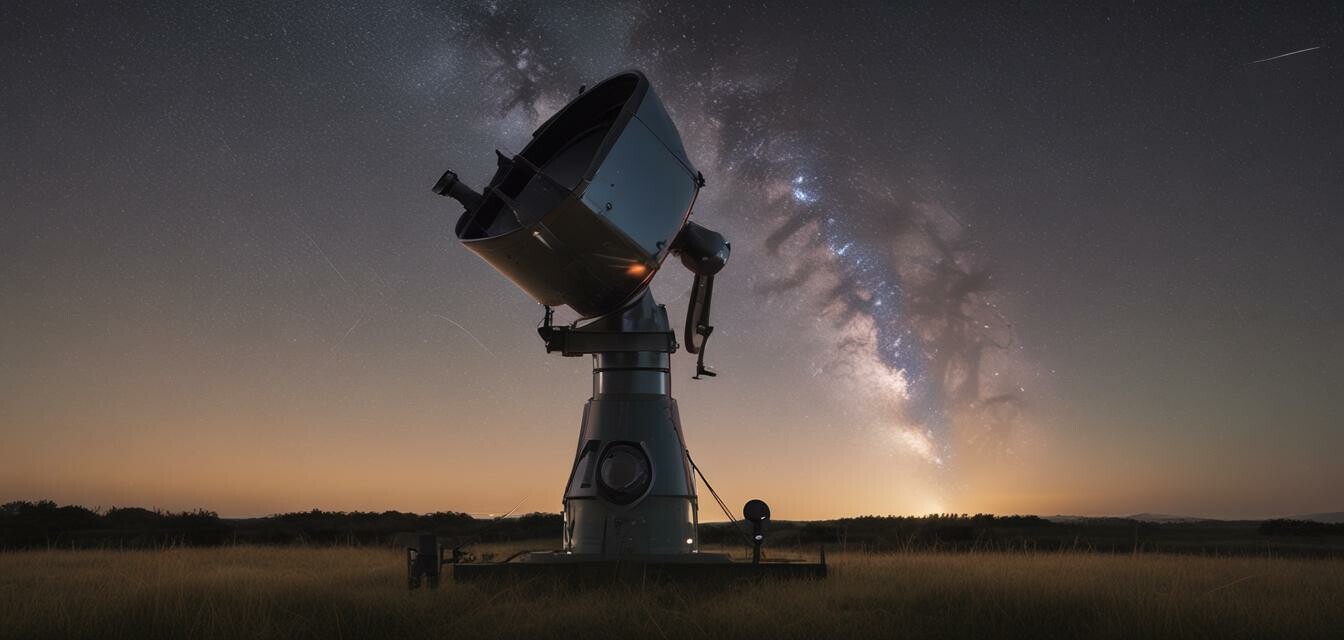
Best Practices for Collimating Reflector Telescopes
Key Takeaways
- Collimation is essential for sharp images with a reflector telescope.
- Regular checks can improve your viewing experience significantly.
- Use a collimation cap or laser collimator for best results.
- Understanding primary and secondary mirror adjustments is crucial.
- Refer to your telescope's manual for model-specific instructions.
Reflector telescopes offer some of the best views of planets and deep-sky objects. However, to get the most out of your telescope, proper collimation is essential. Through this article, we will guide you step-by-step on the best practices for collimating reflector telescopes to provide an optimal planetary viewing experience.
What is Collimation?
Collimation refers to the alignment of the telescope's optics. In reflector telescopes, it ensures that the primary mirror and secondary mirror are correctly aligned with the eyepiece. Misalignment can lead to blurred images, making it difficult to see celestial objects clearly.
Why is Collimation Important?
Proper collimation improves image quality and makes your telescope more effective when observing planets, stars, and other celestial bodies. It can significantly enhance the contrast of planetary details, which ultimately leads to a more enjoyable stargazing experience.
Tools You Need for Collimation
- Collimation cap
- Laser collimator (optional)
- Phillips screwdriver
- Hex key (if needed)
- Telescope manual
- Clear view of the night sky
Step-by-Step Guide to Collimating Your Reflector Telescope
Step 1: Initial Setup
Before starting, make sure your telescope is set up properly:
- Place your telescope on a stable surface.
- Ensure it is at a comfortable height for viewing.
- Point the telescope toward a bright star or faraway object.
Step 2: Using a Collimation Cap
A collimation cap is a simple yet effective tool for aligning your optics:
- Insert the collimation cap into the focuser of your telescope.
- Look through the cap and observe the reflection of your primary mirror.
- Adjust the secondary mirror until the primary mirror's center dot is concentric with the outer ring.
Step 3: Using a Laser Collimator (Optional)
If you prefer a laser collimator, follow these steps:
- Turn on the laser and insert it into the focuser.
- Align the laser's dot with the center of the primary mirror.
- Make adjustments to the secondary mirror using the screws until properly aligned.
Step 4: Fine-Tune the Primary Mirror
Now, it’s time to check and adjust the primary mirror:
- Remove the collimation cap or laser and replace with the eyepiece.
- Look through the eyepiece and focus on a star.
- If the star looks distorted or out of focus, make slight adjustments to the primary mirror.
How Often Should You Collimate Your Telescope?
It’s advisable to check collimation before each observing session, especially if the telescope has been moved. Regular adjustments will help maintain optimal performance for your telescope.
Troubleshooting Common Collimation Issues
| Issue | Possible Cause | Solution |
|---|---|---|
| Blurry images | Poor alignment | Re-adjust collimation |
| Stars showing tails | Secondary mirror misalignment | Adjust secondary mirror and check primary |
| Uneven focus | Primary mirror tilt | Correct tilt with appropriate adjustments |
Conclusion
Collimating your reflector telescope may seem daunting, but with this detailed guide, you can keep your optics aligned for the best planetary views. Regular checks and adjustments will enhance your stargazing experience, allowing you to appreciate the beauty of the night sky more fully.
Tips for Successful Collimation
- Don’t rush the process; take your time to ensure accuracy.
- Refer to your telescope’s manual for specific instructions related to your model.
- Practice collimation in daylight with distant objects before using your telescope at night.
- Keep your optics clean and free from dust.
Pros
- Improved image quality
- Enhanced planetary detail visibility
- Better overall stargazing experience
- Increased telescope longevity
Cons
- Can be time-consuming
- Requires practice to master
- May need specific tools for optimal results
Further Reading
Check out our related articles to deepen your understanding of telescopes: